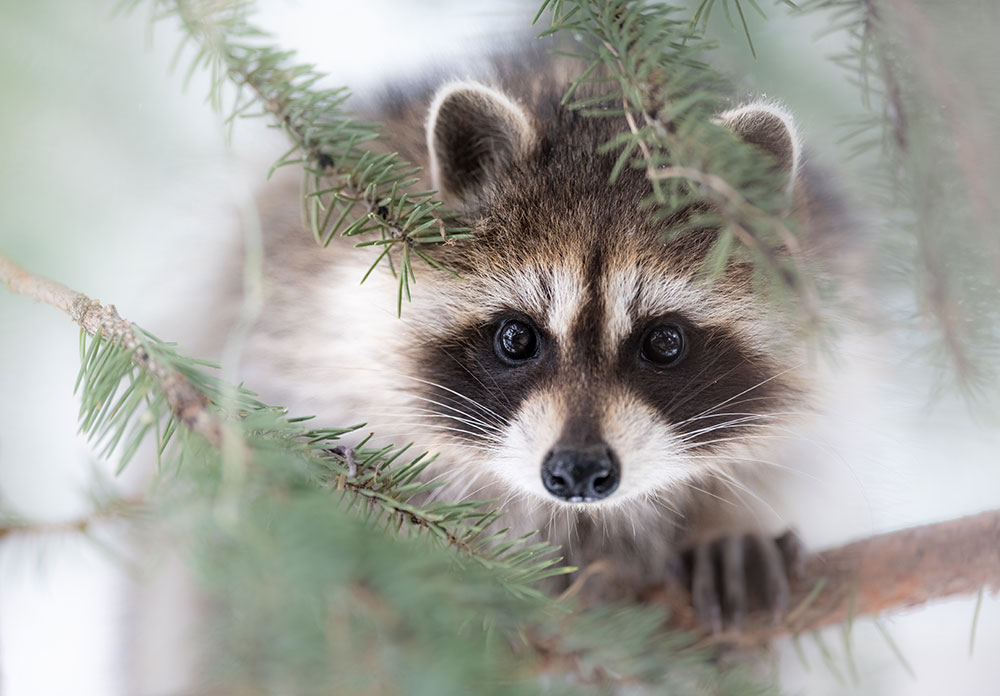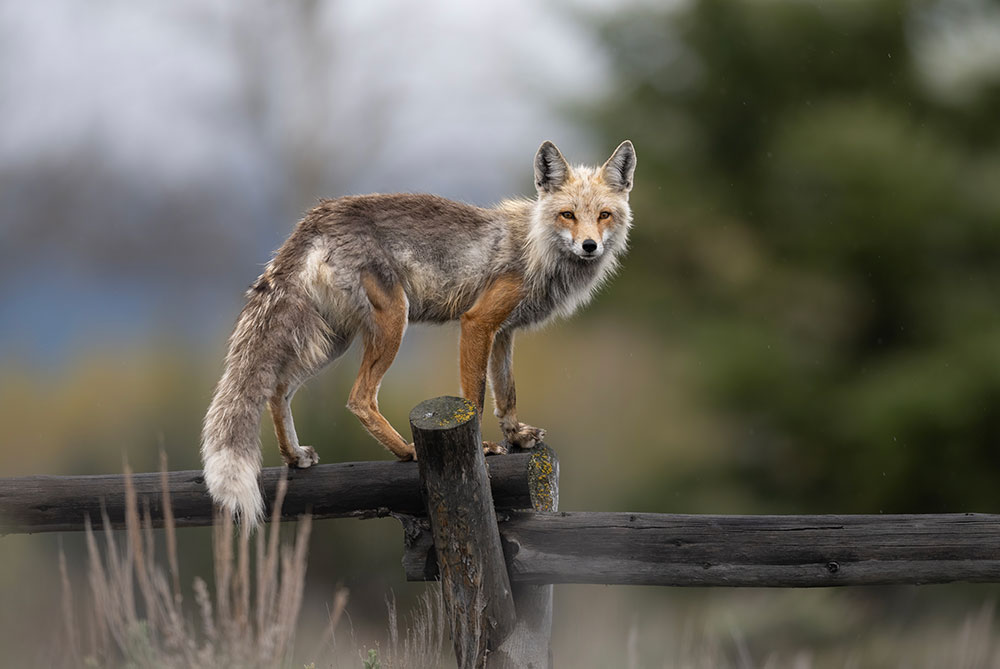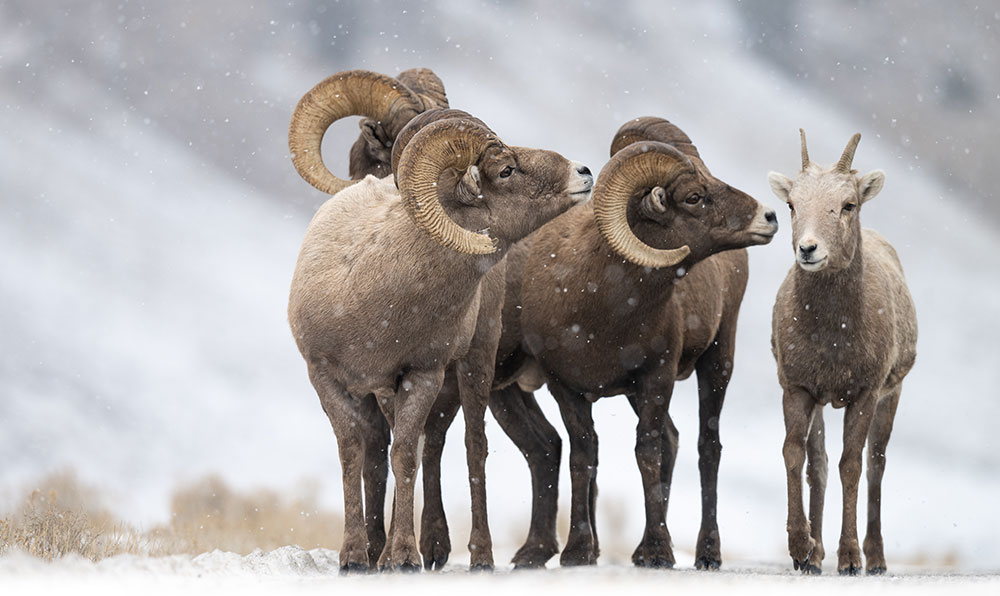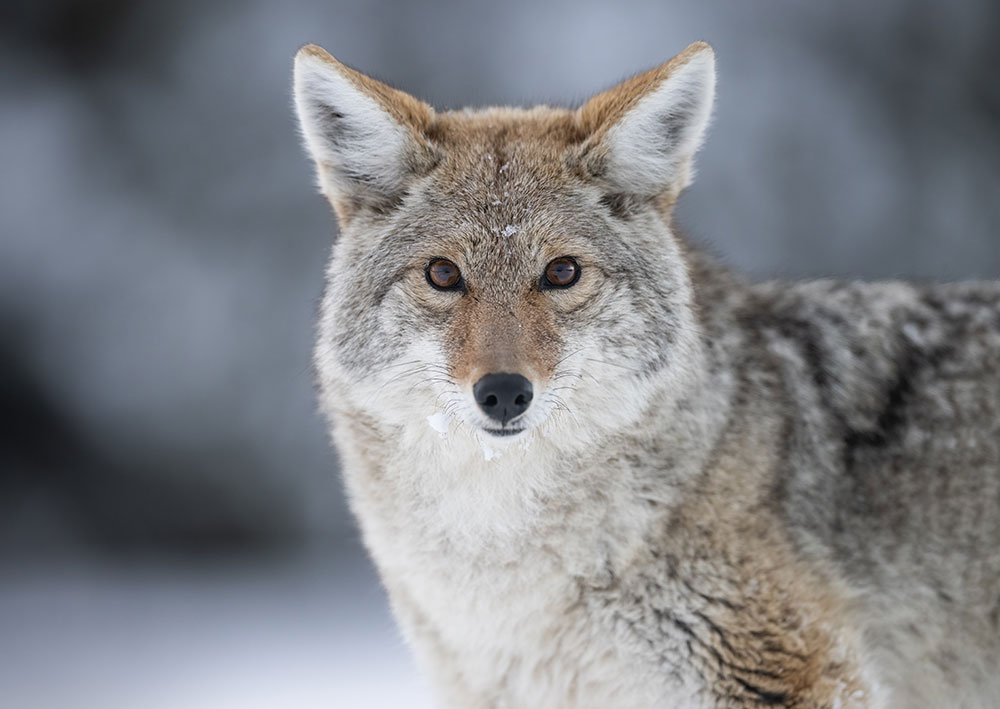
Her social handle is Savannah Rose Wildlife, and she’s a wildlife photographer. You could say she’s obsessed with the photographic pursuit of wildlife and splits her time between creating images for herself and as a camera assistant on wildlife documentary jobs. She’s also a tracker and scout.
Living in Jackson, WY allows Savannah access to the Greater Yellowstone Ecosystem, including Yellowstone and Grand Teton National Parks as well as the Wyoming expansive public lands system.
Those interested in taking up wildlife photography will be happy to know that much of Savannah’s grizzly photography is created from the side of the road. Being in a vehicle or over 100 yards away ensures that both you and the bears are perfectly safe. However, she does spend a great deal of time in the woods, searching out elusive animals. And a lot of that time can be spent waiting and watching.
One factor I love about this ecosystem is the amount of opportunity to shoot wildlife you can have right from the road. While I prefer to adventure off on my own, I absolutely take advantage of this as well! I love the accessibility of the area to everyone of every skill level. You can roam into the high alpine backcountry or cruise the expansive road system if you prefer.
The single best tip I have for anyone who wants to elevate their wildlife photography or get into the craft is to familiarize yourself with track and sign. Good fieldcraft and naturalist skills make all the difference in the world. There are droves of excellent resources for all skill levels, from books to apps to websites.
It is of utmost importance to know that wild animals have boundaries you should never cross. When out in bear country, Savannah says to familiarize yourself with bear spray and how to use it in case of emergency. She also carries a GPS spot device with her that is capable of calling search and rescue through a satellite connection.

Ethics in the Woods
To Savannah, ethical photography of wildlife is her utmost concern. And she uses her social platforms to inform and educate her followers.
I believe that it is absolutely paramount that wildlife photographers give back to their subjects in some way. Otherwise, sharing their time is simply exploitative. I’m aware that I trespass in their home, intrude on their time, and I know to some extent disrupt the peace; although I try hard to be as noninvasive as possible.
Be An Ethical Wildlife Photographer
• Feeding or baiting wildlife creates unnatural dependencies on human food sources, leading to conflict, spread of disease, dangerous proximity to roads and civilizations: all result in untimely death.
• Unsecured trash is another form of this problematic food conditioning, though largely unintentional, which is why people should be educated on what harmful practices they might be overlooking.
• Unethical photography practices like the usage of hounds to tree bears or mountain lions for photography puts an incredible amount of stress on these animals. It is unacceptable to run an animal to the point of exhaustion for some photos.
• It is crucial to practice good field ethics when photographing wild animals. That means not chasing animals, putting too much pressure on fragile sites like nests or dens, or putting yourself in a situation where an animal might feel like it needs to defend itself.
• Safety of the animal is important. Understand that your presence is capable of disturbing the peace. Always let an animal leave a scene if it wants to.
Challenge your beliefs and contemplate how you can be on your best behavior in our wild friends’ home. They deserve it!

Favorite Subjects
My all-time favorite subject is the elusive mountain lion. I’ve watched them slink from shadow to shadow under the light of a full moon, careful not to reveal their presence even in the dead of night. I also enjoy spending time with grizzly bears, which are sentient and powerful creatures. Where the cats are shy, the grizzlies are proud. The cats are subtle, the bears are obvious. In addition to these incredible apex predators, my favorite subjects are always the ones that are the most hidden. Nesting Great Grey owls and goshawks, Martens and weasels, pikas and beavers, and the rare boreal owl. Truly, there are just too many amazing creatures to mention!
Gear that needs to last
Savannah notes that she is not gentle on her gear, and neither is the wild. “One of the main reasons I’ve stuck with Nikon throughout my entire photography career is the substantial quality of gear that endures my abuse,” she says.
A big part of Savannah’s photography includes the setup of camera traps. These remote cameras need to survive intense abuse by the weather and curious bears. Even though the cameras are housed in boxes, she explains that bears learn through touch. “They will not hesitate to get their mouth on anything they find interesting. My lenses have been slobbered on quite a bit and sport a few teeth marks as well but so far, they are still producing great quality images.”

What is a camera trap?
A camera trap is a form of remote photography, in which you place a camera in the wild, that captures candid images of animals in their natural habitat, triggered by a motion sensor. The results are unpredictable.
I like to think that the unique quality of the animals’ presence interacting with your [remote’s] premeditated composition is like the subject having autonomy over how their portrait is taken.
Savannah tries to keep her camera traps out all the time but notes they can be laborious to maintain. It’s not as easy as just turning on a camera and walking away. And plenty of factors are outside of your control: severe weather, animals knocking the kit over, humans tampering with the setup, blowing branches setting off false triggers, and animals not behaving how you anticipated.
My gear does often get grief from bears as they are quite curious and tactile creatures. Usually, they take the opportunity to stop and play with the new toy they have found. Last year, I even had a black bear carry a camera to her bed site and chew on the case all night! Luckily, the camera inside survived the ordeal.
The f/2.8 window
I believe there is a vastly important window of creative expression between f/2.8 and f/4 that is worth the investment for my work, and why I use a 400mm lens and not a 500mm or 600mm. I absolutely love razor sharp depth of field in an up-close wildlife shot.
Savannah says the sharpness of an animal’s eyes while the rest of the image falls away into a dreamy background, “actually represents the moment of the encounter as accurately as possible.”
In a close eye to eye encounter, you’re transfixed as you stare into the animal’s eyes, and they stare into yours. My f/2.8 portraits represent this connection to me and that is the story I want to tell in my work.
The extra f/stop is also valuable in that Savannah often photographs at dawn, dusk and night-time, not in bright sunlight, so the fast nature of the lens means she’ll be able to come home with usable images that hold up from the most dramatic conditions.
Patience is a Virtue
I think I very likely have more patience than most. I’m perfectly comfortable sitting in a blind for hours, as long as there’s a chance of something magical happening … My finished work makes it look like I frequently am face to face with wildlife up-close, when in reality most of my hard drives are filled with animals grazing or walking away. The real up close, face to face types of encounters are in the minority for sure.
Savannah says she tries to be more of a “fly on the wall” when capturing animal behavior with her photography. “I believe there is an element of consent in wildlife photography that is not often discussed,” she says. Best-case scenario: the animals she’s photographing are indifferent to her existence. “Every once in a while you’re lucky to have a wild creature approach with curiosity. These fearless, wonderful moments of interspecies connection are what mean [the] most to me,” she adds.
Creating engaging videos
Along with sharing her photographs, Savannah shares her exploits using short videos on Instagram and TikTok, which she finds to be the quickest way to garner attention for her work. She explains: “Creating punchy, engaging short videos is an art form in itself that is still new to me, and I am enjoying learning how to best use this format to reach out to people.” Along with giving context to her images and bringing those stories to life, she’s found them to be a positive avenue for her business, gaining several thousand followers in a day from videos going viral. “A viral post is incredibly helpful for my small business, in which every order placed makes a difference,” she adds.
Savannah Rose Wildlife
Savannah Rose Wildlife is a full-time wildlife photographer who splits her time between creating images for herself and as a camera assistant on wildlife documentary jobs. She’s also a tracker and scout. She lives in Jackson, WY which allows her to access the Greater Yellowstone Ecosystem, that includes Yellowstone and Grand Teton National Parks as well as the public lands system of Wyoming.
